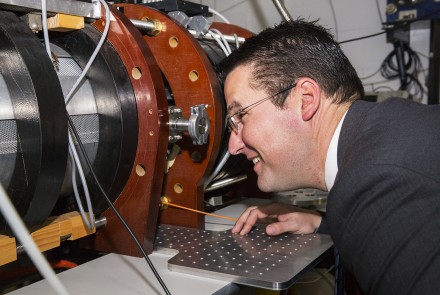Fusion energy facility promises clean energy

The search for star power – fusion – has received a major boost with the launch of the Australian Plasma Fusion Research Facility (APFRF) at The Australian National University.
The facility includes Australia’s largest fusion experiment, the newly upgraded H1, which will now be able to heat fusion experiments to temperatures hotter than the core of the sun.
The facility also includes a new machine, MagPIE, which will accelerate research into extreme materials to be used in future experiments involving even higher temperatures and radiation levels.
Senator Zed Seselja pressed the button to initiate a 30,000 degrees Celsius fusion experiment in H1 to conclude the launch.
“This facility and its fine team have a reputation for world-class innovation and research excellence,” Senator Seselja said.
The fusion of hydrogen into helium powers the Sun and the stars. If harnessed on Earth, it could provide millions of years of greenhouse gas-free, safe, base-load power.
The H1 experiment uses strong magnetic fields to confine the hot fuel inside a doughnut-shaped vessel. The doughnut design is also the basis for the next-step fusion energy experiment, ITER, which is being built in the south of France by a global consortium of 35 nations.
ITER will have a 10-times larger volume than any existing magnetic fusion experiment and is planned to produce 500 megawatts of power, on par with a small power station.
Dr Adi Paterson, CEO of ANSTO, said the choice of materials for use in ITER is an active research area, to which MagPIE is already contributing, in collaboration with ANSTO, which part funded the project.
“Power plant fusion plasmas present an extreme materials challenge. This facility helps us to test whether prototype new materials can withstand the heat flux damage inflicted by a fusion plasma,” Dr Paterson said.
At the same event a five-year plan for fusion research was launched laying out pathways to Australian ITER involvement and enhancements to national experimental fusion science capabilities.
The upgrade to H1 was made possible through a Commonwealth investment of $7.9 million from the National Collaborative Research Infrastructure Scheme (NCRIS) and associated programs.
 Follow
Follow